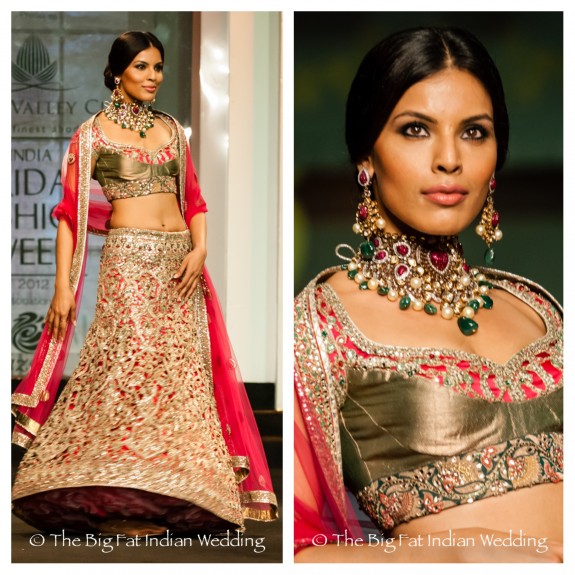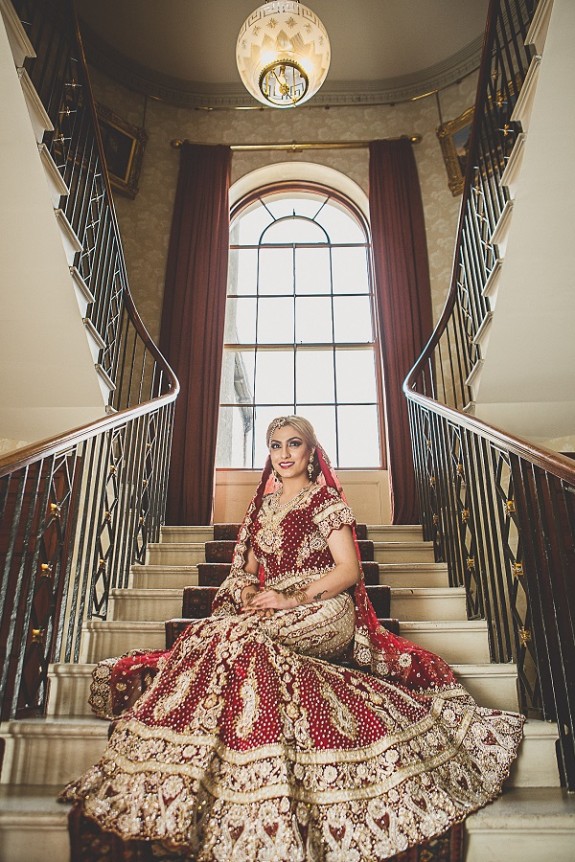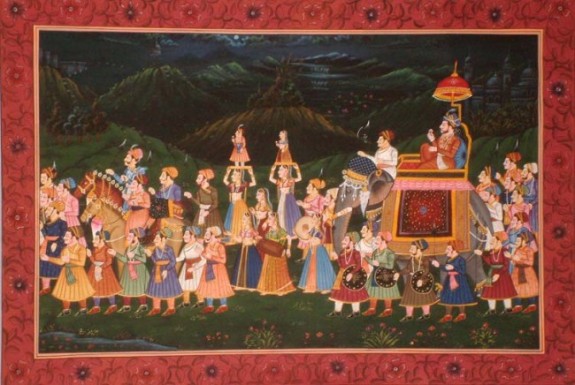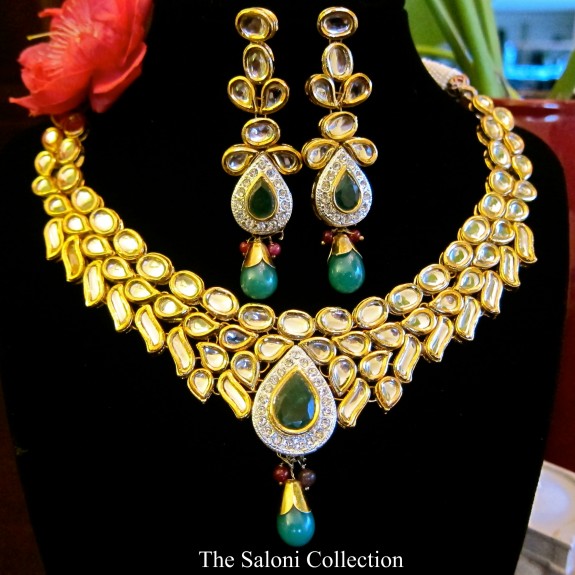The Mughal Empire, which reigned over Asia and the Middle East from 1526 to 1827, had a profound effect on South Asian arts and culture, especially in terms of weddings. A regal people, the Mughals were known for their leisurely lifestyles, which allowed them to focus on artistic endeavors. Emperors would value poets, artists, and fashion designers – and always insisted on being the best dressed in court!
Welcome to Part VIII of the Mughal Wedding Series. You are at the end of the guide, so take a look at the earlier articles:
Mughal Wedding: Introduction
Mughal Engagement/Pre-Wedding Traditions
Mughal Wedding Traditions
Mughal Post-Wedding Traditions
Mughal Bridal Attire and Jewelry
Mughal Groom’s Attire
Mughal Food and Desserts
Mughal Modern Touches & Inspiration – You're here!
The Wedding of Princess Minu and Nanjaraja displayed in a painting.
From bridal attire to gorgeous displays and venues, the Mughal influences on contemporary weddings still persist – even if the Empire no longer does!
Fashion

Ashima Leena’s collection features bright colors with gold embroidery and long, flowing cholis.
Mughal fashions are most prominent in long lehengas, cholis, and pishwas – flowing floor-length skirts that are most commonly seen in modern Pakistani bridal outfits.
The use of heavy, embroidered silk is also derived from the Mughal empire – where kinkhwab and Jamawar silks were popular amongst emperors and their courts.
Golden-toned color palettes and contrasting patterns are also features of Mughal fashion design which have been adapted to many South Asian wedding attires.
A Modern Mughal bride in an styled shoot by Upendo Images.

Architecture
A Mughal garden near Kashmir, used by emperors for leisurely walks – but today serves as a popular wedding venues.
The Mughals are famous for their palatial designs that featured marble and intricate carvings. From the Taj Mahal to the Red Fort, Mughal architecture has been an inspiration to many modern-day wedding venues and banquet halls.
Mughal gardens are a popular venue for outdoor ceremonies – they were designed as resorts and places of relaxation. The colorful displays of flora accompanied by vast greenery and elaborate fountains makes for quite a royal scene!
Mughal gardens are also known to house beautiful tents – which are convenient for weather mishaps and also a tribute to their nomadic roots.
Food
A savory chicken mughlai – flavored with saffron, peppers, and almonds, courtesy of Nigella Lawson's recipe.
If you have ever tasted Mughlai cuisine, you can understand why it's a popular choice for the glitz and glamour of a wedding reception!
Flavorful and exquisite Mughlai foods still influence Indian and Pakistani chefs today – from saffron-infused biryanis to sweet and creamy kheer.
Mughlai dishes were literally made for royalty, and this reflects in their linguistic titles as well. The “shahi” in “shahi biryani” or “shahi chicken korma” refers to shah, or royalty. These dishes are made with fresh cream, expensive nuts, and elite spices such as saffron.
Jewelry
A gorgeous necklace and earring set, featuring the Mughal touch of gold and glass gemstones, from The Saloni Collection.
Mughal jewelry is unsurprisingly imitated today as well – with its heavy use of gold, shimmering jewels, and thick chains.
Jadau jewelry exclusively used gold bases and highlighted the heavy ornamentation with glass gems and other precious stones. Kundan jewelry is similarly adorned with gold and bright gemstones – and can serve as beautiful headpieces that will turn any bride into a true rani!
While similarly ostentation jewelry has been simplified for more “common” use in modern weddings, a bride can always opt to go all out and don the large, dangling designs!
Mughal customs are all around us – and modern brides have a lot of inspiration to look to from their royal predecessors! From fashion and food to palaces and jewels, the Mughal empire has left the world with many artistic styles that are truly timeless.
What are your favorite Mughal designs?
Photos courtesy of exoticindiaart.com, myarchitecturediary.blogspot.co.uk, and allrecipes.com.




